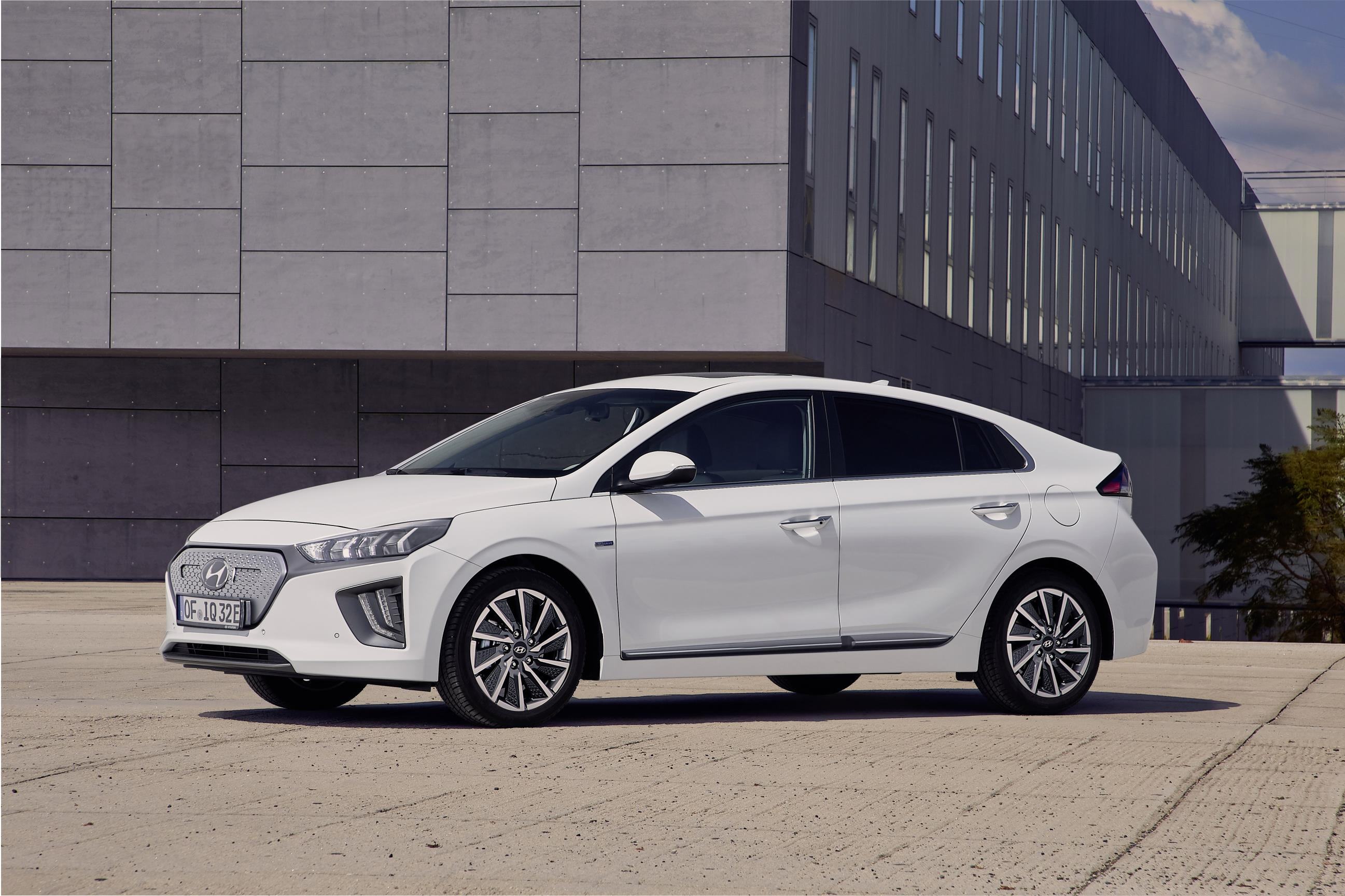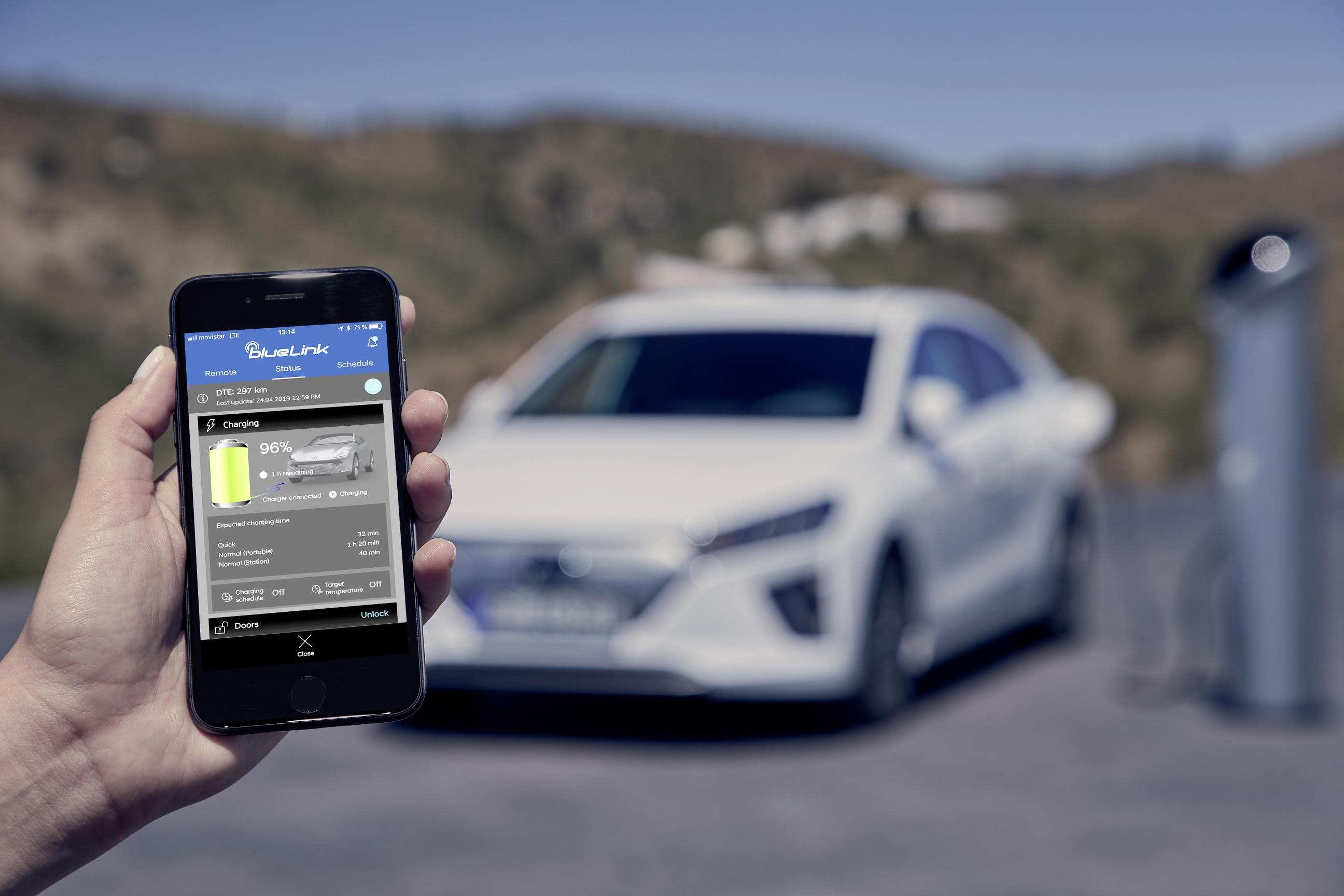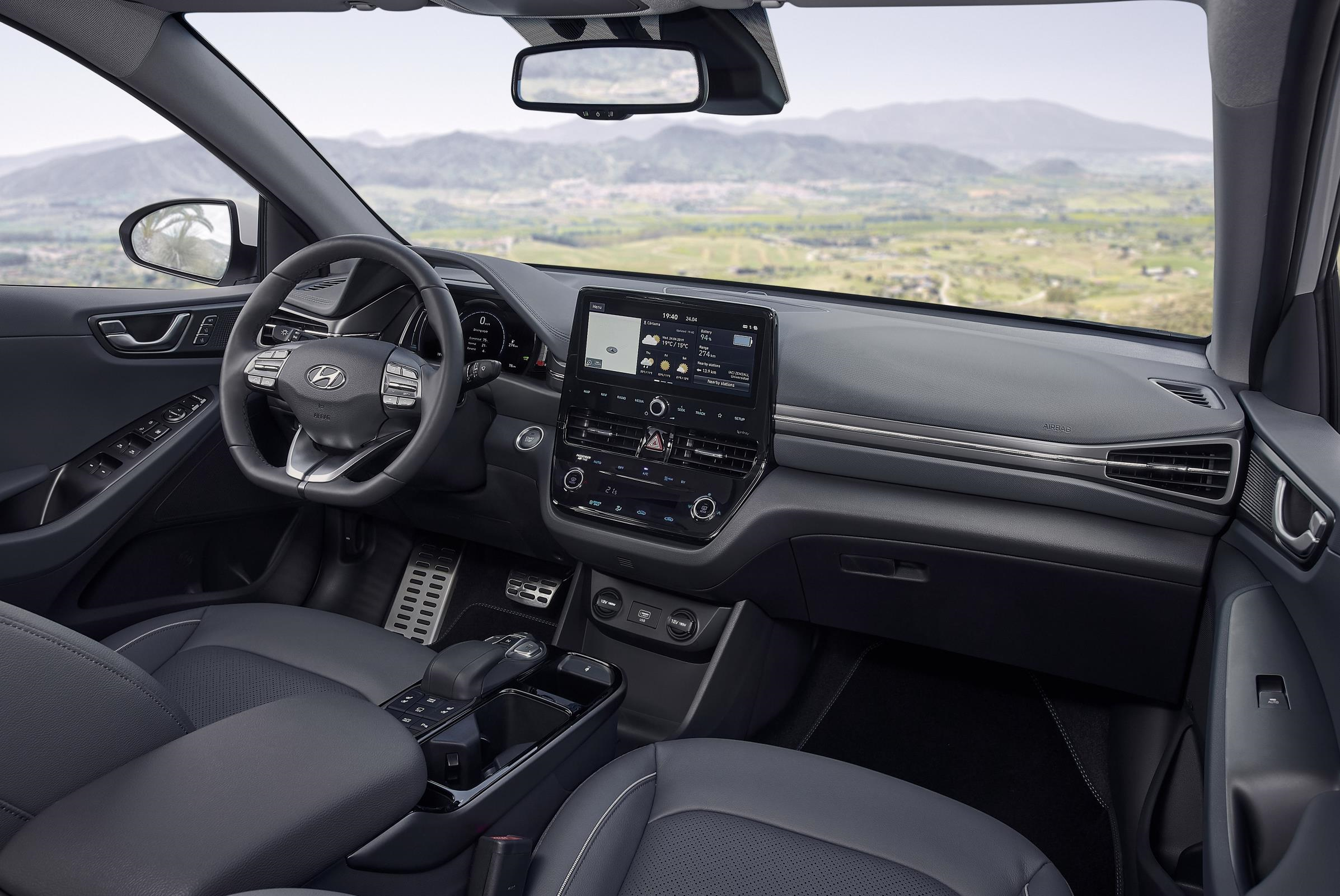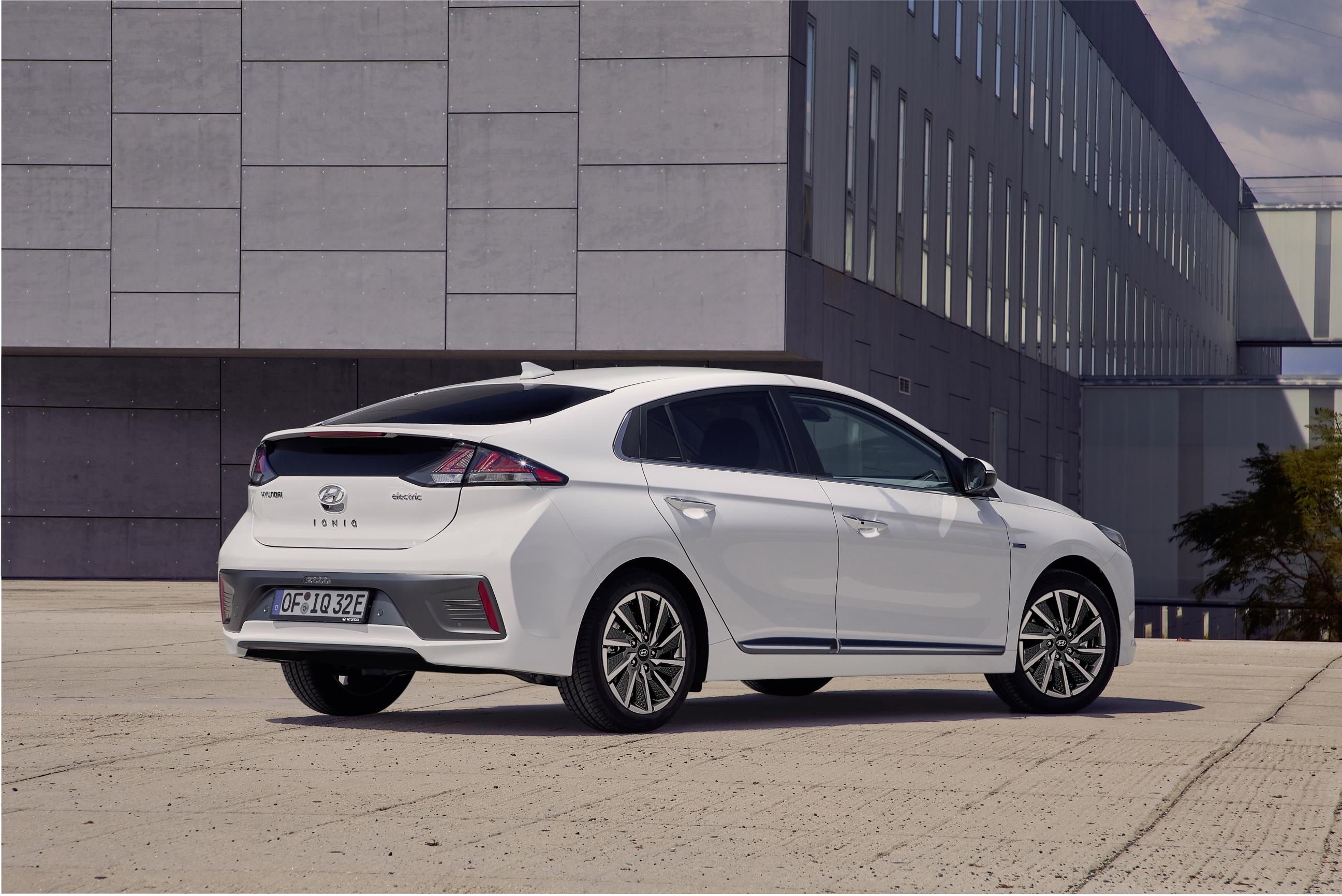As of its launch in 2016, Ioniq was the world’s first car planned from the outset to offer three electrified powertrains: hybrid, plug-in hybrid and full electric. Hyundai has now upgraded its offer, with added technological features and a refreshed look both inside and out. Hyundai is leading the way in future mobility, while other manufacturers are still planning, or just revealing, their first eco-models.

The latest Ioniq features advanced Blue Link connectivity services, ‘SmartSense’ active safety and driving assistance systems and the very latest infotainment features. In addition, both the exterior and interior design receive updates, while drivers of the new Ioniq Electric variant can also enjoy 36% added energy capacity thanks to an upgraded 38.3kWh battery, which means that drivers can go even further between charges. It offers a range of 182 miles (WLTP figure). Its e-motor delivers a maximum power of 133bhp, allied to 217lbs ft of torque and is fitted standard with a 7.2kW on-board charger (upgraded from 6.6kW) for Type 2 AC charging. Using a 100kW fast-charging station, the battery can reach 80% charge in as little as 54 minutes.

Both Ioniq Hybrid and Ioniq Plug-in feature the highly-regarded Kappa 1.6-litre GDI, direct-injection petrol, four-cylinder engine that delivers a maximum power of 102bhp and 108lbs ft of torque. The hybrid’s permanent magnet electric motor delivers 41.5bhp (125lbs ft), powered by a lithium-ion-polymer battery pack (1.56kWh) positioned under the rear seats. On the other hand, the plug-in version’s electric motor delivers 58.5bhp (44.5 kW) and maximum torque of 125lbs ft, powered by a 8.9kWh battery pack. Both versions deliver a system output of 138bhp and up to 195lbs ft of torque. The hybrid can manage pure electric mode at speeds up to 75mph, while drivers choosing the Ioniq Plug-in can rely on over 32-miles of EV range.

As well as the revised convenience and connectivity features, Ioniq’s reimagined interior incorporates a number of new design features to enhance a sophisticated image. In addition to the standard black fabric seat trim, customers have the option of four leather seat colours: Black, Grey two-tone, Red Umber (exclusive for hybrid and plug-in) and Electric Shadow (exclusive to electric version). The dashboard garnish features a Dark Chrome accent.

Below the new wide screen 10.25-inch monitor, the control panel for heating and climate control has been redesigned and sports a glossy finish. New touch-type controls allow for accurate operation of heating, ventilation and air conditioning. The Ioniq Electric standard high-resolution 7.0-inch LCD console display (also available on hybrid and plug-in hybrid range, albeit on the higher trim versions) has been improved with mood lighting to visualise the different drive mode themes. To round off the improved modern interior design, blue ambient lighting has been applied across the passenger-side lower dashboard and the centre console.